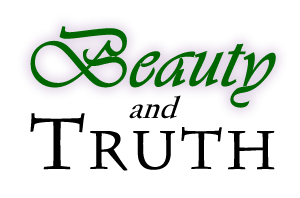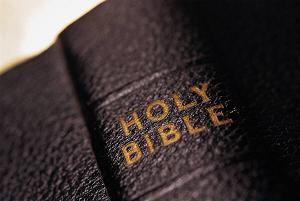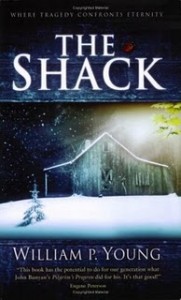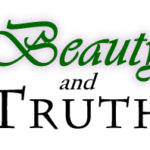Beauty and Truth 1: Four Sets Of Stories
Later this may become a new column series. Today it’s mainly a conversation-starter, after Becky’s Monday column, and her followup comment:
I still think the most God-glorifying story would be the one that marries truth and beauty.
 Amen, I say. And this is not simple opinion; it is Biblically defensible. Exposure to reflections of true beauty is not only optional for Christians, but required. Right now I can think of three reasons to defend this statement, based on the Bible itself:
Amen, I say. And this is not simple opinion; it is Biblically defensible. Exposure to reflections of true beauty is not only optional for Christians, but required. Right now I can think of three reasons to defend this statement, based on the Bible itself:
- The Bible shows itself as beautiful.
- The Bible tells us much about beauty.
- The Bible reveals all we need to know about our Creator, Who is beautiful.
One thing have I asked of the LORD,
that will I seek after:
that I may dwell in the house of the LORD
all the days of my life,
to gaze upon the beauty of the LORD
and to inquire in his temple.Psalm 27:4
 As theologian Wayne Grudem summaries, “God’s beauty is that attribute of God whereby he is the sum of all desirable qualities” (Bible Doctrine, page 100).
As theologian Wayne Grudem summaries, “God’s beauty is that attribute of God whereby he is the sum of all desirable qualities” (Bible Doctrine, page 100).
Believe it or not, despite all our denominations and doctrine debates (enjoyable or not), it seems more Christians agree about what truth is, than about what beauty is.
Before starting an in-depth series to tell that, maybe it would be helpful to show it.
I can’t do this without help. But I can start, by suggesting four sorts of stories, with four different ways of pairing truth and beauty. All of these are “evangelical.” Some are also controversial — thus, you may disagree with my choices of what fits in which category.
1. Neither very truthful nor very beautiful.
 My nomination: The Shack.
My nomination: The Shack.
Last year I bought a used copy. And I simply could not get into the book. If the author had front-loaded the story with the arguably heretical parts, that would have made it more interesting. (I had similar issues with The Da Vinci Code.) Instead, the introductory chapters kept giving intentional author intrusion and emotion-manipulation.
- The protagonist had a rough religious upbringing. But that was very hard to sympathize with, because his business and family life were fine.
- His daughter was abducted and killed, and worse — a clear sympathy ploy.
- Tell-not-show: I kept being informed how I should react to past abuses or present sufferings. That’s already violating even the unwritten Beauty ordinance for good books. I hadn’t even gotten to Truth violations yet.
As Fred Sanders wrote (sarcastically from a “literary snob” view, but accurately!):
The result is oppressive, as in the description of a tree that the character Mack crashes into: As he lies prone and looks up into the tree, it is said “to stand over him with a smug look mixed with disgust and not a little disappointment.” Take a moment right now, reader, to see if you can arrange your face into an expression that communicates smugness mixed with disgust and disappointment. You will find it “not a little” impossible, and you have greater expressive range than trees. This is typical of the way Young projects attitudes rather than actually describing anything.
So far as I can tell, then, The Shack rightfully takes the heat for playing loose with the truth — which already weakens true beauty. But oddly, it has escaped what could have been equally rightful criticism for being an arguably un-beautiful book.
What Christian novels seem not very beautiful or truthful?
2. Truthful, but not very beautiful.
 Some years ago, I was handed a book — I don’t recall how, or who from — that argued for a specific perspective of theology within the orthodox Christian tradition. If I recall right, the main character had just graduated seminary and was confronted with a series of theological maxims that perplexed him. The challenge, leading to the plot: would he do his research, see if these things were so, and thereby have his whole world changed?
Some years ago, I was handed a book — I don’t recall how, or who from — that argued for a specific perspective of theology within the orthodox Christian tradition. If I recall right, the main character had just graduated seminary and was confronted with a series of theological maxims that perplexed him. The challenge, leading to the plot: would he do his research, see if these things were so, and thereby have his whole world changed?
Through the rest of the book, he does his research, and — surprise, surprise — comes to believe this theological perspective. Meanwhile, in a barely related subplot, he meets a pretty girl, studies with her, and marries her. (After reading this book, I did something like this myself; I still don’t recall the narrative making me pine for the possibility!)
Later he is hired to be pastor of a church. But because he’s preaching from this doctrine perspective, folks hate him and try to throw him out. At one point he calmly, graciously lectures someone about what they’re doing wrong. Then he leaves.
I don’t remember the title. (I’m not sure I would say it here, even if I did.) What I do remember is very functional writing. Well-assembled sentences performed their jobs. Yet I don’t recall much beauty. That might have made the book, even with its author’s intention to make it basically a propaganda piece, much better. That theological view might have captivated me then. But the functional-only presentation of it never has.
What Christian novels seem truthful, but are not very beautiful?
3. Beautiful, but not very truthful.
Tomorrow I will have more about this, because inevitably this brings up the topic of Thomas Kinkade paintings. Finally I’ve figured out why people give them constructive criticism. (But in this, I do not defend personal attacks on someone who has recently passed away, or snooty everything-must-be-gritty or artists-can’t-make-money views).
In short, the problem is not that Kinkade’s paintings show a world without sin.
Instead, the problem is that Kinkade’s paintings show a world that has never had sin.
The artworks are beautiful, for sure — but not truly beautiful, because a crucial truth is missing. That truth is this: in God’s true universe, every perfect world or thing must have first passed through evil and suffering. Even God Himself did, in Christ. To portray an alternate world, without either present or past sin, seems a subtle form of rebellion. Oddly enough, it’s a rebellion against the Rebellion: I refuse to recognize the Fall.
But, more on this in tomorrow’s Rearranging Icons 4: Characters Becoming Icons.
What Christian novels seem beautiful, but are not very truthful?
4. Both beautiful and truthful.
We live for this. God Himself is both beautiful and truthful. His Word, without which we could not know Him or have faith in Him, is beautiful and truthful. The Psalms of David, the parables of Jesus, and many newer stories by Christians, are beautiful and truthful.
A dozen rush to mind. But it’s a long list, and I won’t pre-empt you listing your favorites.
What Christian novels are beautiful and truthful, as shown and told by the Word?










































Stephen, I guess I’d quibble in one area. If a novel doesn’t tell the truth about Jesus Christ, can it really be considered Christian fiction that isn’t truthful?
I guess this is an issue for me because I think “Christian” gets credited for a lot that really belongs to false teachers and those say “Lord, Lord,” but don’t actually know God. This is apparent, I believe, when those people deny the truth about God’s character and even more when they mishandle the truth about the cross.
Thankfully God will sort out in the end just who those are, but when it comes to books, I guess those that speak doctrinally need to be doctrinally true.
I think many books written by Christians are truthful. I still think we lag behind in the area of beauty. It seems, however, that some writers work so hard to achieve beauty that they are willing to abandon truth. It’s the tension that should drive writers, I think.
Becky
I completely agree: such a book would only be “Christian” in name only. An imposter “Christianity.” Assuming the very best, it’s a book marketed as “Christian” whose author may have good intentions, but a naive or immature understanding of Biblical truth. In this case, I mean “Christian” more as an external label for the novel, not as an accurate indicator that the themes inside are overall Biblical.
Another thought: more likely, a novel or creative work that is beautiful, but not truthful, cannot be called “Christian” if that term has any meaning. Even if a Christian helped with it, or Jesus was named, or if the artistic excellence honors God’s image that remains even in sinful humans, the work is not meaningfully Christian.
Unfortunately, I believe this applies to The Shack. It is marketed as “Christian,” but contains far too many lies about God’s nature and Christ’s sacrifice to be truthful. The fact that the book’s style exchanges beauty for functionality is only a bonus objection.
I’d have to pin Auralia’s Colors by Jeffery Overstreet under catagory four. While it does not have many echoes of Christianity until the fourth book, and even those are subtle and not allegorical, it speaks about this issue, about the purpose of art, and how beauty is meant to function in the world.
Jumping in….
1. I’m not sure I’d pit Beauty against Truth, ever. That which is beautiful is desirable. Deception is not desirable, for most of us. Something can be aesthetically pleasing, but contain no real truth, but that’s looking at the wart on a man’s nose and calling him a moral reprobate. It works in fiction when you want the outside to display the heart, but in real life, it’s not that simple. Deception is repulsive, not beautiful.
I never read The Shack, but I’m gonna pick on you anyway.
If the author had front-loaded the story with the arguably heretical parts, that would have made it more interesting. (I had similar issues with The Da Vinci Code.) Instead, the introductory chapters kept giving intentional author intrusion and emotion-manipulation.
2. It’s an interesting irony, isn’t it, how we’ll accept logical assaults more readily than emotional ones? But I’ll tell you, I’d rather have a viable argument against my own position than one that a first grader could peel apart.
The protagonist had a rough religious upbringing. But that was very hard to sympathize with, because his business and family life were fine.
I’m not sure I’d sympathize more if his family life were in shambles. There’s a limit to how much “woe is me” the protagonist is allowed. But I’ve a thing for heroes. Heroes eventually get up, whether they like it or not. Even if it was twenty years ago and life is good now, those scars don’t just vanish, and the right combination of situation & emotion can very well dredge all that back up or provoke a specific reaction.
His daughter was abducted and killed, and worse — a clear sympathy ploy.
Eh, yes and no, on this one. The art’s in the telling. It probably would have worked with a different set-up…and if people didn’t tend to over-use it.
Tell-not-show: I kept being informed how I should react to past abuses or present sufferings. That’s already violating even the unwritten Beauty ordinance for good books. I hadn’t even gotten to Truth violations yet.
That’s violating the entire integrity of the story, matter of fact, by insulting the reader and intruding as an author.
The challenge, leading to the plot: would he do his research, see if these things were so, and thereby have his whole world changed?
Through the rest of the book, he does his research, and — surprise, surprise — comes to believe this theological perspective.
It’s a pretty viable storyline, however, given the number of people who start out atheist and turn into Christians.
Meanwhile, in a barely related subplot, he meets a pretty girl, studies with her, and marries her. (After reading this book, I did something like this myself; I still don’t recall the narrative making me pine for the possibility!)
That was likely to avoid 300 pages of “and then he read this book.”
Later he is hired to be pastor of a church. But because he’s preaching from this doctrine perspective, folks hate him and try to throw him out. At one point he calmly, graciously lectures someone about what they’re doing wrong. Then he leaves.
I’m pretty sure this is where I’d have been lost.
I don’t remember the title. (I’m not sure I would say it here, even if I did.) What I do remember is very functional writing. Well-assembled sentences performed their jobs. Yet I don’t recall much beauty. That might have made the book, even with its author’s intention to make it basically a propaganda piece, much better. That theological view might have captivated me then. But the functional-only presentation of it never has.
But does being able to regurgitate a theological point immediately make it truthful? My general understanding is that the primary theme of this is a martyr complex. (“Woe is me; I have found the truth, and I am alone!” Elijah said that once. Then God showed him the 400 prophets Obadiah was hiding in a cave.) I don’t care if all he did was recite John 3; there’s a bit of a thematic issue at work.
Moving on.
In short, the problem is not that Kinkade’s paintings show a world without sin. Instead, the problem is that Kinkade’s paintings show a world that has never had sin.
The artworks are beautiful, for sure — but not truly beautiful, because a crucial truth is missing. That truth is this: in God’s true universe, every perfect world or thing must have first passed through evil and suffering. Even God Himself did, in Christ. To portray an alternate world, without either present or past sin, seems a subtle form of rebellion. Oddly enough, it’s a rebellion against the Rebellion: I refuse to recognize the Fall.
3. The first time I ever heard this argument about Thomas Kinkade was on this site, and maybe it’s because I don’t think of art that way (I usually go ‘oh, gorgeous’ or ‘what the heck?’), but I still don’t understand it. It’s a painting. His specialty was his ability to depict light. Had he been “The Painter of Shadow” would we then accuse him of only depicting a world of sin, death, and evil? Or that was always evil and corrupt? I mean, I’m a sucker for more foreboding artwork myself (I know that’s a total shock 😛 ) but even I can appreciate the stunning brilliance of his work.
Miscellaneous aside: The movie about his life is very, very good. And it really offers a counter-perspective on this front, given the way he grew up and those who mentored him.
A couple examples I might suggest are:
1. The Other Boelyn Girl – Aesthetically stunning, good acting, good script, but had me in a rage in ten minutes, to the point my friend offered to turn it off; I do not well handle sexual abuse, nor characters condoning or engaging in it
2. Seven Pounds – Will Smith is amazing as always, and his death scene, while quite possibly the most horrific scene I’ve ever seen, is well-done, but the concept itself is disturbing, and the climax made me a bit concerned about going to bed j
3. Napoleon Dynamite – I’m sorry, I walked out after 20 minutes. I found it without plot and without intellectual stimulus.
4. The Piano – Oh my gosh, by far the most disturbing movie I’ve ever seen, and I could not finish it. Again, a sexual abuse victim. I told my apt. roommate I was “going to bed” and went to read a book to purge my mind. The woman does a great job playing a mute. And I was a bit concerned I’d have nightmares. (Course, my nightmares have no direct correlation to anything I read or watch.)
Now, on the other side, I have to say a movie that completely took me by surprised as very good was “Not Easily Broken.” It’s based off a TD Jakes novel (which I didn’t know until the end), but wow. Stand aside, Fireproof. Another was “The Book of Eli,” which, while very rough, has got to be the strongest Christian-themed (intentionally or not, I have no idea) movies I have ever seen.
Does this list have to include only books by known Christian authors through Christian publishers? Because that’s a really narrow list.
A beautiful, truthful book that comes to mind is My Antonia by Willa Cather. Not only is the writing lyrical, but the truths explored by the story are timeless. One of which being, why do bad things happen to good people and good things happen to bad people?
Another beautiful, truthful book is To Kill A Mockingbird. Harper Lee may not have packed her book with Jesus references, but the numinous quality is there in the way she writes about the people in the town, and Boo Radley, and Atticus defending Tom Robinson against all popular opinion.
Then there’s Bambi, by Felix Salten. The writing is like reading a long, vivid poem rather than prose. And Bambi’s revelation at the end, that there is One greater than Man, is just about the greatest Truth there can be.
I think we modern-day readers and writers sell ourselves short by looking only to books from the last decade or so. We’ve lost so much of our language over the last century, and without big words, we can’t frame big ideas. Old books still have that.
I don’t mind either way — especially if we’re talking about books or stories that are beautiful, i.e. skillfully done with talent, but not necessarily truthful. As Kaci pointed out, such a story ceases to be as beautiful as it can be. I believe it also ceases to be Christian, if the term has any specific meaning — and I apply that to The Shack.
But something I became more aware of when I was writing this is that when I think of a beautiful, truthful story, I want to think first of a story written by a Christian brother or sister. I don’t want to jump immediately to the secular stuff. Enough great Christian stories are out there that I believe we can limited the discussion and still have plenty to say, plenty of praise to give. And I need to do that more often.
Sure, secular stuff can be beautiful, and even truthful. Yet if I absolutely had to choose, I would choose a truthful Christian story, which isn’t as well-made or beautiful, over the beautiful-but-not-truthful story. Still, I don’t believe we need to choose. And God, our Creator and the Author of Scripture, didn’t seem to think so.
I’m not sure I’d go so far as saying Kinkade’s paintings weren’t truthful. I don’t think the sin nature always has to be apparent in the art. As viewers (or readers) we bring the knowledge of sin with us. Perhaps we’ve had a very bad day, as is common in the fallen world, and an image of a quaint cottage is just what we need to regain proper perspective.
I wrote a blog post about Kinkade last week and included one of his cottage paintings. Every time I click back to my blog and catch a glimpse of the painting, I appreciate it more and more.
He created paintings that hint of darkness being overcome as well.
Jessica, as I’m still exploring this issue, I’d appreciate a link to the blog entry you had mentioned. I’d also love to see what you described here:
So far I haven’t seen that. If that’s the case, then my criticism must be altered.
One can’t judge an artist only by one painting, after all; one should take into account the whole body of work over the artist’s lifetime. If Kinkade painted those sorts of images only in the past, though, and more recently only drew the world-without-sin “cottage” paintings, it would seem there is cause for gracious criticism.
Nor do I. My basis for saying so is that some Psalms, for example, explore man’s sin nature in-depth, and sometimes even sympathetically — for example, from the perspective of someone frustrated at God’s seeming distance or unfairness — and other Psalms are absolutely happy and wonderful, with no sin in sight. The latter group show an ideal world. But they’re in the context of other Psalms that cover other topics. Together they give a more-balanced and thus truthful presentation.
Again, I think the best objection to Kinkade’s art is that much of it shows a “world” that is not only non-sinful, but never was sinful. To me, that’s a questionable form of “escapism.” But the fault isn’t so much with the artist, but with the fans who desire what could be argued is an illusory presentation. You don’t have to work for that pleasant emotion — which was one art critic’s definition of sentimentalism.
Still, I recognize that there are plenty of rotten critiques of Kinkade, based on the notion that an artist shouldn’t be wealthy, or pleasant, or (of course) Christian at all.
Stephen, again, I’d really enjoy knowing how paintings with a lot of light indicate a theology that includes a world that never fell and that is without sin. I’ve yet to hear that.
Stephen, There’s a few on this page (follow the first link below). The Cross, Rock of Salvation. Granted, they’re still pretty idyllic, but I see in them a hint that darkness has been overcome. Obviously judging by your last comment with some of Kinkade’s quotes, sin/darkness wasn’t his schtick, but it looks like some crept in there despite himself.
http://www.thomaskinkade.com/magi/servlet/com.asucon.ebiz.catalog.web.tk.CatalogServlet
Here’s the direct link to my blog post about Kinkade:
http://jessicathomasink.com/blog/faith/the-elephant-in-the-cottage/
I do find it interesting that he was seen in the art world as all fluff, no substance, and yet, here we are discussing his art and his perspective, which is what they do in college art history classes. What they don’t teach in college art classes (least they didn’t used to) is how to sell your stuff and actually make a living at it.
Oops, that first link doesn’t take you directly there. The paintings I mentioned are in the inspirational section.
Jessica, those give a few more reasons why I just can’t go all-out and personally criticize the artist, or turn into one of the “haters” who are “gonna hate.”
In fact, I recall wandering into a Signature Gallery on my honeymoon (in downtown Gatlinburg, Tennessee) and enjoying the experience — though some of the patriotic and Disney-derived licensed paintings struck me as overdoing it!
First, as I mentioned below, he does capture a half-truth: that paradise on this Earth will be back. That’s not “sentimental.” It’s something Scripture urges us to anticipate. Yes, Earth now groans in labor pains, but that’s because it awaits resurrection — just as we groan, under sin, sickness, and death, but only for now.
Second, almost any artwork, no matter how “gritty” or “kitschy,” has a reflection of God’s common grace — even if the artist tries to show only common grace!
Third, I do appreciate more these paintings you named, and your description:
Fourth, like you said, all this has proven a great conversation starter:
Yep. If nothing else, I’m glad to see people recognizing, even if by contrast, Hey, this stuff doesn’t work for too long; we must deal with the Fall! Very excellent discernment there. How often do I pretend to myself that this place isn’t sinful?
And surely there exists a middle ground between either putting pictures of your work on everything from screen-saver programs to nightlight covers to the backs of recliners, or condemning that all as disgusting worthless materialism.
Yep. I agree. I should hope there is a middle ground. Because in Thomas Kinkade’s case, I bet I’m safe to say there was some greed there, and I’m sure that fed negatively into his problems with alcohol in later life.
Again, I think the best objection to Kinkade’s art is that much of it shows a “world” that is not only non-sinful, but never was sinful. To me, that’s a questionable form of “escapism.”
Maybe I’m missing something, but that’s a terribly long reach just to decry paintings of overly lit cottages. Sometimes I think we’re so overwhelmed by the potential for a slippery theological slope that we find them where none exist. I’m not sure I see the difference in digging into Kinkade’s paintings for escapism and digging into The Hunger Games for occult themes.
I third the question from Jeremy and Kaci regarding how well-lit pretty buildings and scenery = sinless theology.
Because you have made this point about the opening of the Shack being emotionally manipulative more than once… I think you’re missing the point there. The beginning of the novel is setting up Mac’s sorrow and anger. The author needed his MC to have valid reasons for feeling betrayed by God. What would impact a man more than to have his very young daughter kidnapped and brutally murdered? Storywise, it makes perfect sense to me.
Beautiful True books that come to mind…
Taliesin by Stephen Lawhead – the rhythm and prose of this book resonates so perfectly for me and I love the joy and the waiting and the humility and the romance and the revealing of the One True God.
Hinds Feet on High Places by Hannah Hurnard – a beauty-full story of learning to trust our Shepherd no matter what (this is reminding me that I really need to buy this book for my own, I haven’t read it in years)
The Two Collars by Jerri Massi – a children’s book, loved it from the first time I read it and only realized as a teenager how allegorical the transformation from fearful slave to beloved daughter/princess was
Perelandra by CS Lewis – every time I read this book it is new again. Who is the centre? He is the centre! Ha, so great. 😀
Movies…
Spiderman. *sheepish* I actually declined going to see the first one in theatres because I thought it looked stupid but there are just certain scenes from all three movies of the first franchise that do capture beauty/truth. (Scene skipping is a handy thing)
Hero. There is a short segment during the orange/red tale that is disturbing and the ending is tragic. The truth in this one isn’t so much about any answers given as it is about the questions that are raised. The music, the colour themes… ah.
Ink. This is one of those movies you need to see more than once. A huge chunk of the movie weaves back and forth in flashbacks. And the ending is paradoxical. But oh the redemption. 😀
Perhaps. Yet my central objection was not as much against the presentation of a seemingly unrealistic life story, as against author intrusion. As a reader, I have this simple request: place me inside the person’s mind, let me understand his world and his desires from the inside, and don’t keep tapping me on the shoulder as I read.
By contrast, Young can’t keep his own views out of the story. Like an evangelical, he wants strongly to make sure I got his point exactly, without room for nuance.
That’s more bothersome to me, given the story’s inaccurate portrayals of God later.
My wife and I are just finishing reading this masterpiece, together for the first time, but certainly not for our first times as individuals. Try reading it aloud sometime. Wow. You absolutely feel everything, can simply imagine the sensations, pleasures, and pains … and comprehend even more the wonder of Lewis’s alternate paradise.
This makes me curious, and not just because I’m a fan of the original Spider-Man film series (with exceptions in the third film, for sure). Which scenes did you like in the first film, I wonder, and which were the ones you preferred to skip?
Spider-Man 2 is even better, not only for its excellent characterization, action, and pacing, but for the surprising theme at the heart of the story: Sometimes to do what’s right, we have to be steady and give up the thing we want the most, even our dreams. Not only is that counter to the dull follow-your-dream mantra of other movies, it’s stunningly Biblical. That phrasing got me through some very hard times.
Tomorrow night we’ll be viewing the superhero film Thor again. There’s a film that, despite its “compressed epic” nature, takes time to linger on beautiful scenes, flies with a powerfully charged and thematic score, and incidentally reflects very Biblical truths about human love, humility, and true heroism.
From Jeremy:
I appreciate this, because it’s a reminder that in a case like this, it’s likely not the artist who’s to “blame” (if anyone is), but viewers who could want partially-true versions of beauty. (The same is true with something like The Hunger Games, which as far as I can tell has potential to be abused for evil, but isn’t itself a source of sinful temptation.)
Oddly enough, I’d written something much like this for Thursday’s column, though that column was actually written before this one. I think I should have listened to myself.
From Kaci:
(Checks) I don’t think I said that, though. I don’t pretend to know the artist’s theology. That’s more easily discerned from a novel or even a song; from a painting, not so much.
But let me parse out my own statement and suggest a revision to it.
A better way to say that would be that for many viewers, all of Kinkade’s paintings seem to show a world that has never had sin. This allows for the “beauty in the eye of the beholder” issue. But it also allows for the notion of a full body of work. And then the question becomes easier to ask: do the majority of these pictures show the world as it is, or as it will be, or a world that has never existed?
Thinking about this, I realize that it’s easy for me to import meaning into the image. I can “redeem” it in a way, because from a Biblical perspective, I do recognize that this Earth is destined for physical resurrection. Then we can have all the brightly lit pastel cottages in idyllic environments we’d like, for the glory of God the ultimate Artist.
Yet I doubt if that’s what Kinkade himself was getting at, in all the images.
So, is a New-Earth, sinless future existence the “meaning” of the painting? Perhaps not. Perhaps its “meaning” is a half-truth. It only needs the missing piece: that in the true world, God will bring us idyllic perfection after the resurrection and defeat of death.
Found a few quotes from Kinkade. They had informed my perspective of his self-stated artistic intentions. But because my intent wasn’t to offer personal criticism of the artist as much as questions about why the artworks are so popular, I hadn’t brought them up.
However, as the topic has been broached, it might make sense to explore these now.
Again, I don’t believe this is necessarily evil. Yet it does give cause to ask why this approach has proven so popular among evangelicals, given our callings to make do with the world we have now, sin and all, and await such idyllic existences only after death, in Heaven — and after Heaven, in the New Heavens and New Earth.
[…] paying attention, the opportunity to communicate those things we care about can be lost forever. These quotes may help clarify my starting point. Kinkade did say he wanted to “portray a world without the […]